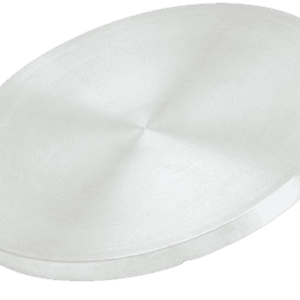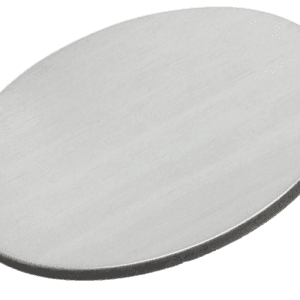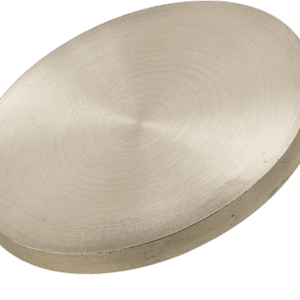Tin Antimonide Sputtering Target Description
Tin Antimonide Sputtering Targets provided by TFM can be used in thin film deposition techniques such as Physical Vapor Deposition (PVD) and Magnetron Sputtering due to their very high purity and excellent quality, resulting in films with superior properties. Their good electrical conductivity makes them widely used in electronic devices. Additionally, they can be used to prepare semiconductor films for various electronic and optoelectronic applications. Tin Antimonide Sputtering Targets also possess magnetic properties, which contribute to their role in magnetic storage media.
Related Product: Tin Zinc Sputtering Target, Indium Tin Sputtering Target
Tin Antimonide Sputtering Target Specifications
| Compound Formula | SnSb |
| Molecular Weight | 240.47 |
| Appearance | Grey Target |
| Available Sizes | Dia.: 1.0″, 2.0″, 3.0″, 4.0″, 5.0″, 6.0″ Thick: 0.125″, 0.250″ |
Tin Antimonide Sputtering Target Handling Notes
Indium bonding is recommended for Tin Antimonide Sputtering Targets due to some of its characteristics that make it less suitable for sputtering, such as brittleness and low thermal conductivity. These factors make the material susceptible to thermal shock, and indium bonding helps to mitigate these issues, ensuring better performance and stability during the sputtering process.
Tin Antimonide Sputtering Target Application
Tin Antimonide Sputtering Targets offer a range of applications across various fields due to their unique properties:
- Thermoelectric Materials: Tin Antimonide Sputtering Targets have potential applications in thermoelectric materials, which are used to convert thermal energy into electrical energy or vice versa. This is particularly useful in energy harvesting and thermoelectric power generation, where efficient thermal management is crucial.
- Semiconductor Films: Tin Antimonide Sputtering Targets can be used to prepare semiconductor films that may find applications in electronic and optoelectronic devices, such as thin-film transistors, photovoltaic cells, and other semiconductor technologies.
- Conductive Films: Films deposited from Tin Antimonide Sputtering Targets often possess good electrical conductivity, making them suitable for applications requiring conductive surfaces, such as conductive films, conductive glass, and other electronic components.
- Magnetic Materials: The magnetic properties of Tin Antimonide Sputtering Targets allow them to be utilized in the preparation of magnetic materials. These could be used in magnetic storage media and other applications that require magnetic functionality.
- Thermal Management: Tin Antimonide Sputtering Targets can be applied in thermal management systems, such as the preparation of thin films with good thermal conductivity. These films are ideal for use in heat sinks and other devices that require efficient heat dissipation.
- Research and Development: Tin Antimonide Sputtering Targets are valuable tools for research and development, especially in the exploration of new material properties and potential applications. This makes them essential in laboratory settings and academic research, where innovation in material science is a key focus.
Tin Antimonide Sputtering Target Packaging
Our Tin Antimonide Sputtering Target is meticulously handled during storage and transportation to ensure that the quality of our products is preserved in their original condition. This careful management helps maintain the high purity and excellent performance characteristics of the material, ensuring that it meets the stringent requirements of your applications.
Get Contact
TFM offers Tin Antimonide Sputtering Targets in various forms, purities, sizes, and prices. We specialize in high-purity thin film deposition materials with optimal density and minimal grain sizes, which are ideal for semiconductor, CVD, and PVD applications in display and optics. Contact Us for current pricing on sputtering targets and other deposition materials that are not listed.


 MSDS File
MSDS File



Reviews
There are no reviews yet.